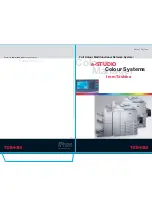
AT-S63 Management Software Menus User’s Guide
Section V: Spanning Tree Protocols
443
bridge within a MSTP region. After the counter reaches zero, the
BPDU is deleted. The counter is reset to its original value if a BPDU
crosses a MSTP regional boundary.
6 - Configuration Name
The name of the MSTP region. The range is 0 (zero) to 32
alphanumeric characters in length. The name, which is case sensitive,
must be the same on all bridges in a region. Examples include Sales
Region and Production Region.
7 - Revision Level
The revision level of an MSTP region. The range is 0 (zero) to 255.
This is an arbitrary number that you assign to a region. The revision
level must be the same on all bridges in a region. Different regions can
have the same revision level without conflict.
8 - Bridge Identifier
The bridge identifier of the switch. The identifier consists of the switch’s
CIST priority value and MAC address, separated by a slash
(/). To change the switch’s priority value, refer to “Configuring the CIST
Priority” on page 445. The MAC address of the switch cannot be
changed.
9 - Root Identifier
The bridge identifier of the root bridge of the CIST spanning tree
domain. The identifier consists of the root switch’s bridge or CIST
priority value and MAC address, separated by a slash (/). If this MAC
address is the same as the current bridge’s MAC address, then the
switch is functioning as a root bridge. If the two MAC addresses are
different, then a different switch is functioning as the root bridge. This
parameter is only displayed with MSTP is enabled.
Note
Selection C, CIST menu, is described in “Configuring the CIST
Priority,” next.
Selection M, MSTI menu, is described in “Creating, Deleting, and
Modifying MSTI IDs” on page 449.
Selection V, VLAN-MSTI Association menu, is described in “Adding,
Removing, and Modifying VLAN Associations to MSTI IDs” on
page 452.
Selection P, MSTP Port Parameters, is described in “Configuring
MSTP Port Settings” on page 457.
Selection D, Reset MSTP to Defaults, is described in “Resetting
MSTP to the Defaults” on page 468.
Summary of Contents for AT-9400
Page 16: ...Figures 16 ...
Page 18: ...Tables 18 ...
Page 28: ...Preface 28 ...
Page 30: ...30 Section I Basic Operations ...
Page 60: ...Chapter 1 Basic Switch Parameters 60 Section I Basic Operations ...
Page 64: ...Chapter 2 Port Parameters 64 Section I Basic Operations Port Type The port type ...
Page 84: ...Chapter 2 Port Parameters 84 Section I Basic Operations ...
Page 124: ...Chapter 6 Static Port Trunks 124 Section I Basic Operations ...
Page 144: ...144 Section II Advanced Operations ...
Page 196: ...Chapter 10 File Downloads and Uploads 196 Section II Advanced Operations ...
Page 218: ...Chapter 11 Event Logs and the Syslog Client 218 Section II Advanced Operations ...
Page 242: ...Chapter 13 Access Control Lists 242 Section II Advanced Operations ...
Page 294: ...294 Section III IGMP Snooping MLD Snooping and RRP Snooping ...
Page 314: ...Chapter 19 MLD Snooping 314 Section III IGMP Snooping MLD Snooping and RRP Snooping ...
Page 318: ...318 Section IV SNMPv3 ...
Page 416: ...Chapter 21 SNMPv3 416 Section IV SNMPv3 ...
Page 418: ...418 Section V Spanning Tree Protocols ...
Page 470: ...470 Section VI Virtual LANs ...
Page 520: ...Chapter 26 Multiple VLAN Modes 520 Section VI Virtual LANs ...
Page 532: ...Chapter 27 Protected Ports VLANs 532 Section VI Virtual LANs ...
Page 546: ...546 Section VII Internet Protocol Routing ...
Page 560: ...560 Section VIII Port Security ...
Page 568: ...Chapter 30 MAC Address based Port Security 568 Section VIII Port Security ...
Page 586: ...Chapter 31 802 1x Port based Network Access Control 586 Section VIII Port Security ...
Page 588: ...588 Section IX Management Security ...
Page 610: ...Chapter 33 Encryption Keys 610 Section IX Management Security ...
Page 650: ...Chapter 36 TACACS and RADIUS Protocols 650 Section IX Management Security ...
Page 660: ...Chapter 37 Management Access Control List 660 Section IX Management Security ...
Page 668: ...Index 668 ...
















































